A grape vine trellis is more than just a support; it’s a system that determines the health, yield, and ease of maintenance for your grapevine. From choosing the right type of trellis to understanding the intricacies of trellising and training, this guide sheds light on building the best grape trellis for your home garden. Dive in and let’s cultivate some grape-growing knowledge!
A grape trellis is a vital structure that supports the growth of grapevines, ensuring optimal fruit production. By elevating the grape vines off the ground, a trellis system promotes better air circulation, reducing the risk of diseases. It also facilitates easier harvesting, pruning, and maintenance. The design of the trellis, whether vertical or horizontal, corresponds to the growth habit of the grape variety, ensuring that the plant has ample support throughout its lifecycle.
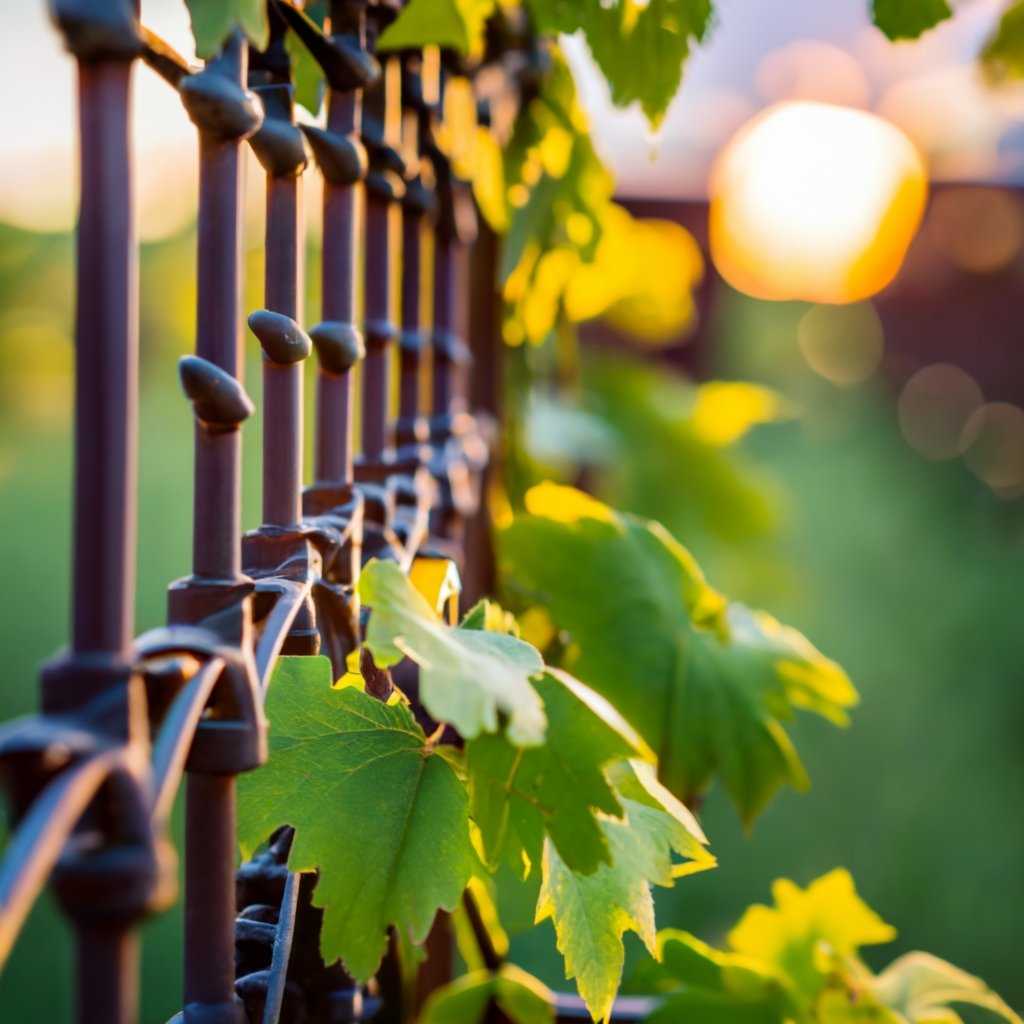
Why is the Right Trellis System Essential for Grape Vines?
Have you ever wondered why your neighbor’s grapevines look so vibrant and yield bunches of delicious grapes, while yours seem a tad… lackluster? The secret might just be in the trellis system.
- Support and Shape: At its core, a trellis is like a gym buddy for your grape vine. It supports the vine, ensuring it grows upright and doesn’t slump over. Think of it as a grape vine’s personal trainer, helping it maintain good posture!
- Vigor and Health: A good trellis system promotes vigor. How? Well, when a vine is well-supported, it gets better sun exposure and air circulation. This means fewer diseases and pests. It’s like giving your vine its daily dose of vitamin D!
- Consistent Growth Habit: Every plant has its own growth habit, kind of like how we humans have routines. With the right trellis, your grapevine’s growth becomes more predictable and manageable. No more wild, unruly vines going rogue on you.
- Ease of Maintenance: Imagine trying to prune or harvest grapes from a tangled mess of vines. Not fun, right? A structured trellis system makes these tasks a breeze. And for those with a home garden, this means more time enjoying your grapes and less time wrestling with them.
Note to reader: Investing in the right trellis system is like buying a good quality mattress. It’s a game-changer. Your grapevine will thank you, and trust me, you’ll notice the difference in the quality and quantity of your grapes! Cheers to bountiful harvests ahead! 🥂🍇
What Types of Trellises Are There for Grape Vines?
Deciding on the right trellis for your grapevines is a bit like choosing the perfect outfit. It’s got to fit just right, suit the occasion, and, of course, look fabulous. But instead of talking fashion, let’s talk trellises.
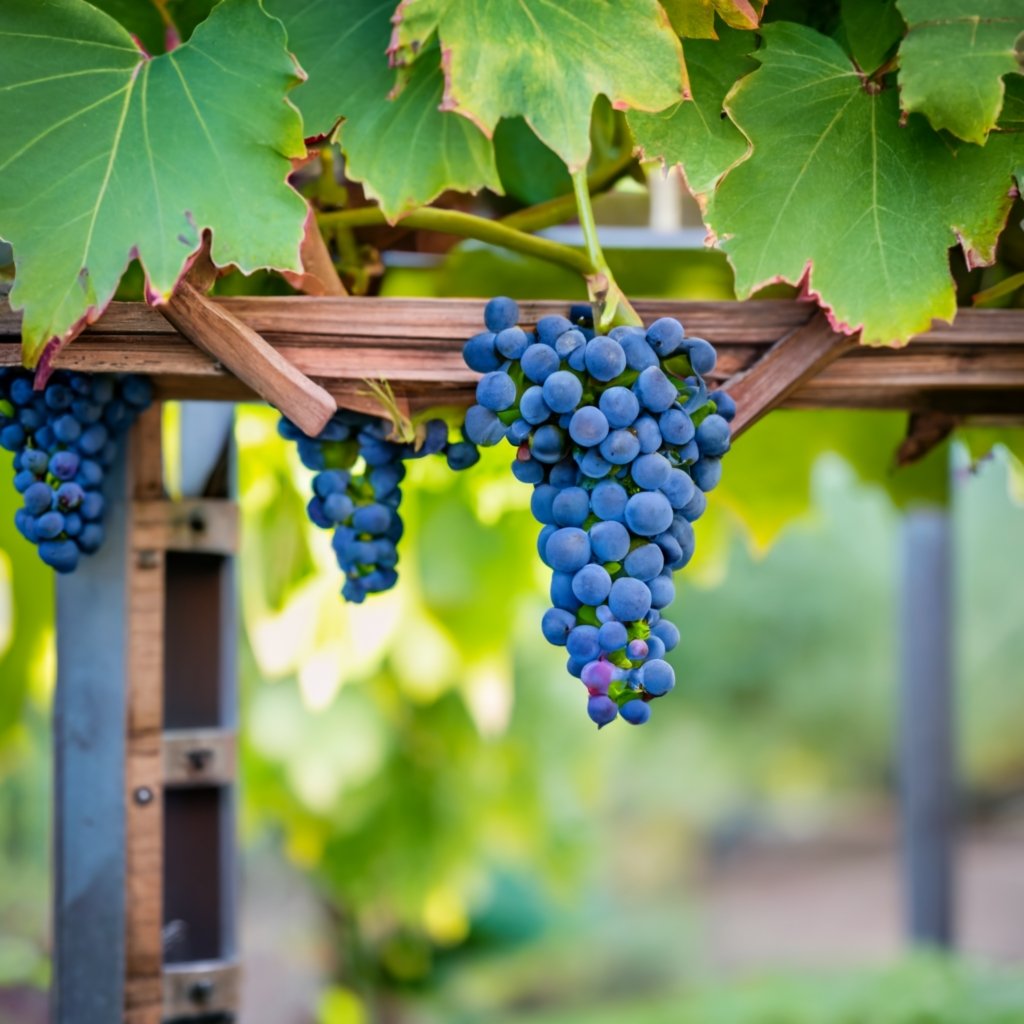
Vertical Trellises: Rising to the Challenge
Ever noticed grapevines reaching for the skies like they’re competing in a vertical marathon? That’s the magic of vertical trellises. These trellises are designed to support the grapevine as it grows, well, vertically.
Why Vertical?: This design ensures optimal sunlight exposure and promotes better air circulation. Less shadowy hideouts for pests and diseases!
- VSP: Ever heard of VSP or vertical shoot positioning? It’s a fancy term for ensuring that grape shoots grow upward in a neat manner, maximizing fruit exposure to sunlight. Think of it as organizing your grapevine’s wardrobe, so everything hangs neatly without clutter.
- Horizontal Divided Trellises: Perfect for those vines that like to spread out while reaching up. It’s like a two-story house for grapes.
- Lyre Trellis: This U-shaped trellis system is a dream for grapes wanting a bit of everything – vertical growth, sunlight, and easy breezy air circulation.
- Smart-Dyson: A hybrid system that allows both vertical and downward growth, ensuring your vine gets the best of both worlds.
- Southern Sprawl: Ideal for the Syrah/Shiraz varieties, it encourages a more relaxed downward growth.
Got a vine that’s eager to reach new heights? A vertical trellis might just be its best buddy!
Cordon Trellises: Horizontal Mastery
Now, imagine a grapevine that loves sprawling out in all its glory. That’s where cordon trellises come in. Instead of reaching for the stars, these trellises encourage vines to grow horizontally.
- Two’s Company: The two cordons in this system are like the grapevine’s outstretched arms, allowing fruits to dangle gracefully below.
- Old Souls: Older vines, with their extensive growth, often favor this system. It gives them room to spread out and show off their maturity.
- High Cordon: The high cordon system is a variation where the horizontal arms are elevated, giving grapes plenty of space to hang free.
So, if your grapevine is more of a laid-back lounger, a cordon trellis might be the way to go!
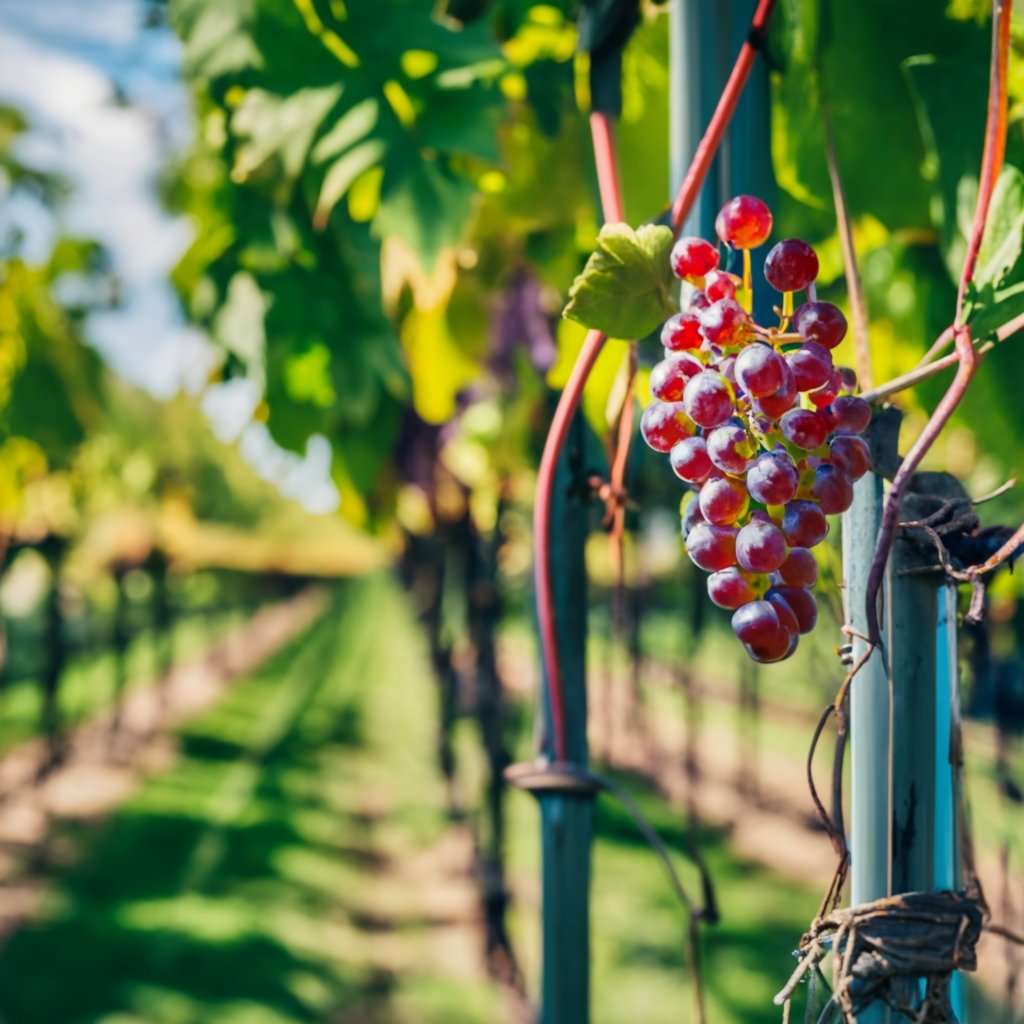
Cultivars and Their Ideal Trellis Choices
Below is a list of popular grape cultivars, their general growth habits and vigor, along with the ideal trellis types suited for each. It’s essential to match the grape variety with the right trellis system to optimize growth, fruit yield, and quality.
| Cultivar | Growth Habit/Vigor | Ideal Trellis Type |
|---|---|---|
| Cabernet Sauvignon | Moderate vigor, upright growth | Horizontal Divided Trellises or Lyre trellis |
| Chardonnay | Moderate to high vigor, varying growth patterns | Various (Choice influenced by conditions; VSP, High Cordon, etc.) |
| Merlot | Varies from low to high vigor | Vertical Foliage Support (for low-medium vigor); Smart-Dyson, Lyre, GDC (for medium-high to high vigor) |
| Riesling | Moderate vigor, semi-upright | Vertical Shoot Position (VSP) or Lyre trellis |
| Pinot Noir | Low to moderate vigor, upright | Lyre or Vertical Shoot Position (VSP) trellis |
| Muscat | Varies based on specific cultivar | T trellis system, Arbors, Pergolas |
| Syrah/Shiraz | High vigor, sprawling | Smart-Dyson (initially) or Southern Sprawl system |
Quick Tip: Whether you go vertical or horizontal, the key is to understand your grapevine’s personality. Just like us, they have preferences. And hey, when they’re happy, they reward us with delicious grapes. Win-win! 🍇🎉
How Do Grape Growth Habits Influence Trellis Choices?
Let’s get into the heart of the vineyard: the grapes themselves. Just as you wouldn’t wear flip-flops to a snowy mountain, you wouldn’t pick a trellis without considering your grape’s personality. Let’s unpack this a bit.
Cultivar Matters: Grapes come in different cultivars, which are basically grape varieties. Each cultivar has its own unique growth pattern. Think of it like different breeds of dogs – a Chihuahua has different needs than a Great Dane!
Know the Growth Habit: The growth habit of your grapevine is its natural way of growing. Some are wild and vigorous, loving the freedom to sprawl. Others prefer a more structured growth. It’s a bit like some people loving freestyle dance while others rock the waltz.
Type of Grape: The type of grape you’re growing plays a role too. Are you aiming for table grapes to munch on or wine grapes to brew some fine vino? Their growth habits can differ, influencing your trellis choice.
Vigorous Vines Need Room: Got a vigorous grapevine on your hands? This energetic grower will need a trellis that gives it space to flex its muscles and grow without restraint.
So, before choosing a trellis, ask yourself: What’s my grape’s personality? Understanding this can guide you to the perfect trellis match. And remember, a happy grapevine means more delicious grapes for you. Cheers to that!
Pruning and Training: The Art of Guiding Your Grapevine
If grapevines were artists, then the act of pruning and training would be their paintbrushes. It’s all about shaping and guiding them to create a grape masterpiece. Let’s explore how you can master this art.
Why Prune?: Pruning isn’t just about giving your grapevine a stylish haircut. It’s about controlling growth, ensuring better fruit quality, and preventing diseases. Think of it as a spa day for your vines where they come out looking and feeling better.
Training System Choices: Just as there are different types of workouts, there are different training systems for grapevines. The goal? To guide them in a specific growth pattern.
- Vertical Shoot Training: This is where you encourage your grapevine to grow shoots vertically. It’s like telling your vine, “Reach for the stars!”
- Spur-Pruned vs. Cane-Pruned:
- Spur-pruned is all about cutting back the previous year’s growth, leaving just a few buds. It’s a bit like maintaining a short, neat hairstyle.
- Cane-pruned, on the other hand, involves selecting one or two canes from the previous year’s growth and removing the rest. This is the grapevine equivalent of growing out your hair for a new look.
So, ready to shape your grape masterpiece? With the right pruning and training techniques, you’ll not only have a vine that looks good but also one that produces the juiciest grapes. And let’s be honest, that’s what we’re all here for, right?
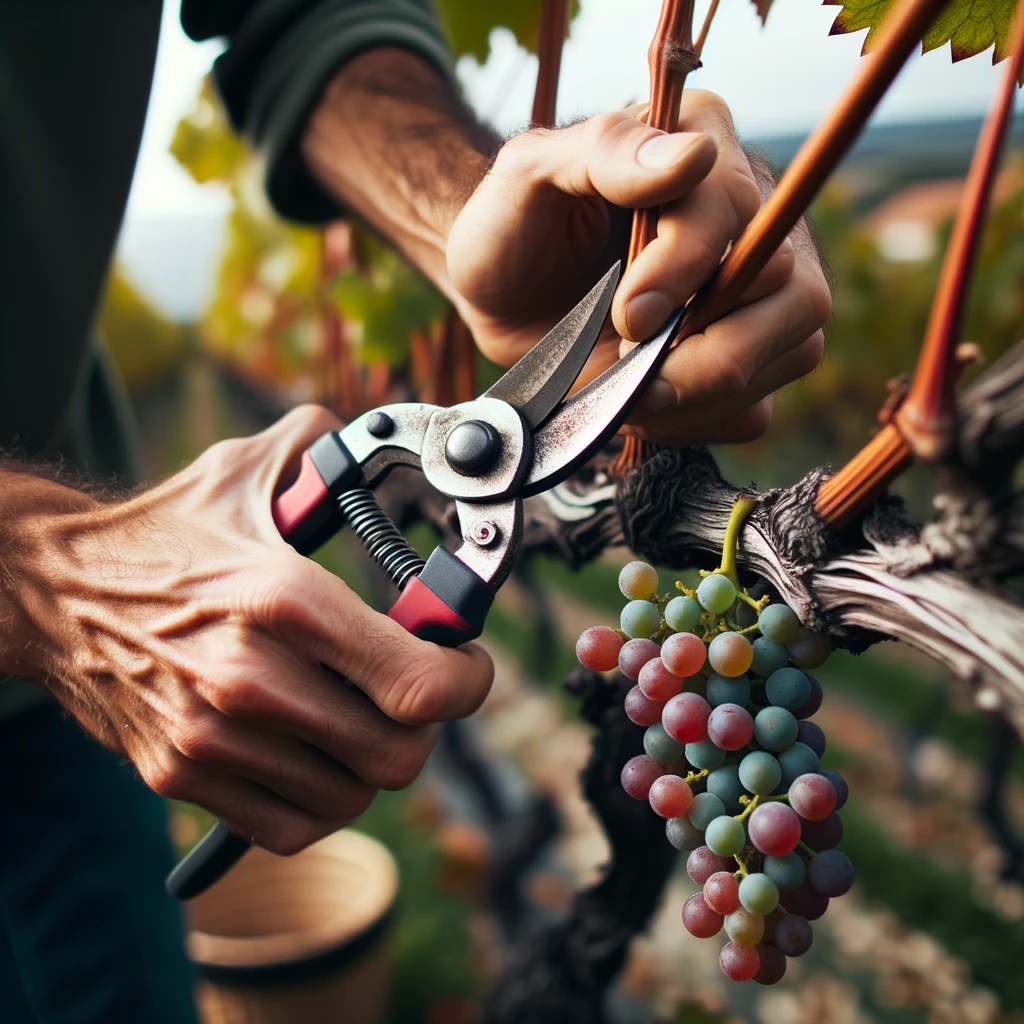
The Role of Wires in a Grape Trellis System
Let’s talk about the unsung heroes of the grape trellis world: the wires! It’s like the framework behind a beautiful painting. Without them, our grapevines would be, well, a hot mess. Here’s a quick guide on the importance of trellis wire and its role in supporting our grape buddies.
Sturdy Support: Wires are the backbone of the trellis system. They give the vines something to hold onto, ensuring they grow upright and strong. It’s like a reliable friend who’s always got your back.
Types of Wires:
- Top Wire: This is the chief wire, the big boss of the trellis world. The top wire is usually positioned at the highest point and offers the main support for the grapevines. It’s like the main pillar in a building.
- High Tensile: Now, if you want a wire that’s tough and can handle the weight of those juicy grapes, high tensile is your guy. It’s durable, resistant to sagging, and perfect for those heavy grape bunches.
- Galvanize and Steel: When it comes to wire materials, galvanized steel is a popular choice. Why? It’s rust-resistant! That means come rain or shine, these wires stay strong and don’t wear out easily. Plus, they have that shiny look that adds a touch of glam to your vineyard.
So, next time you’re admiring a bunch of grapes, take a moment to appreciate the wires that held them up. They might be behind the scenes, but they play a starring role in the grape-growing show!
Benefits of Building a Grape Trellis in Your Home Garden
Considering adding a grape trellis to your home garden? You’re in for a treat. Not only will it make your garden look like it’s straight out of a magazine, but the benefits are bountiful (pun intended!). Here’s why a grape trellis is the next best thing for your garden:
1. Order and Structure: A grape trellis brings organization to your garden. No more wild grapevines running amok! With proper trellising and training, your vines will grow in a neat, orderly fashion. It’s like giving your garden a well-deserved makeover.
2. Boosted Fruit Production: By elevating your grapevines, you ensure they get ample sunlight. This means juicier grapes and larger fruit clusters. It’s simple math: more sunlight = more delicious grapes.
3. Healthier Vines: Elevating your grapevines also ensures better air circulation, reducing the risk of fungal diseases. Healthy vines are happy vines, and happy vines mean a happier you!
4. Dual Functionality: A grape trellis isn’t just for grapes. It provides natural shade in your garden. Picture this: lounging under your grape trellis on a sunny day, sipping some iced tea. Paradise, right?
5. Aesthetic Appeal: Let’s be honest, a grape trellis adds a touch of elegance and sophistication to any garden. It’s a conversation starter and might just make your neighbors a tad bit envious.
Space and Size: How Much Room Does Your Grapevine Need?
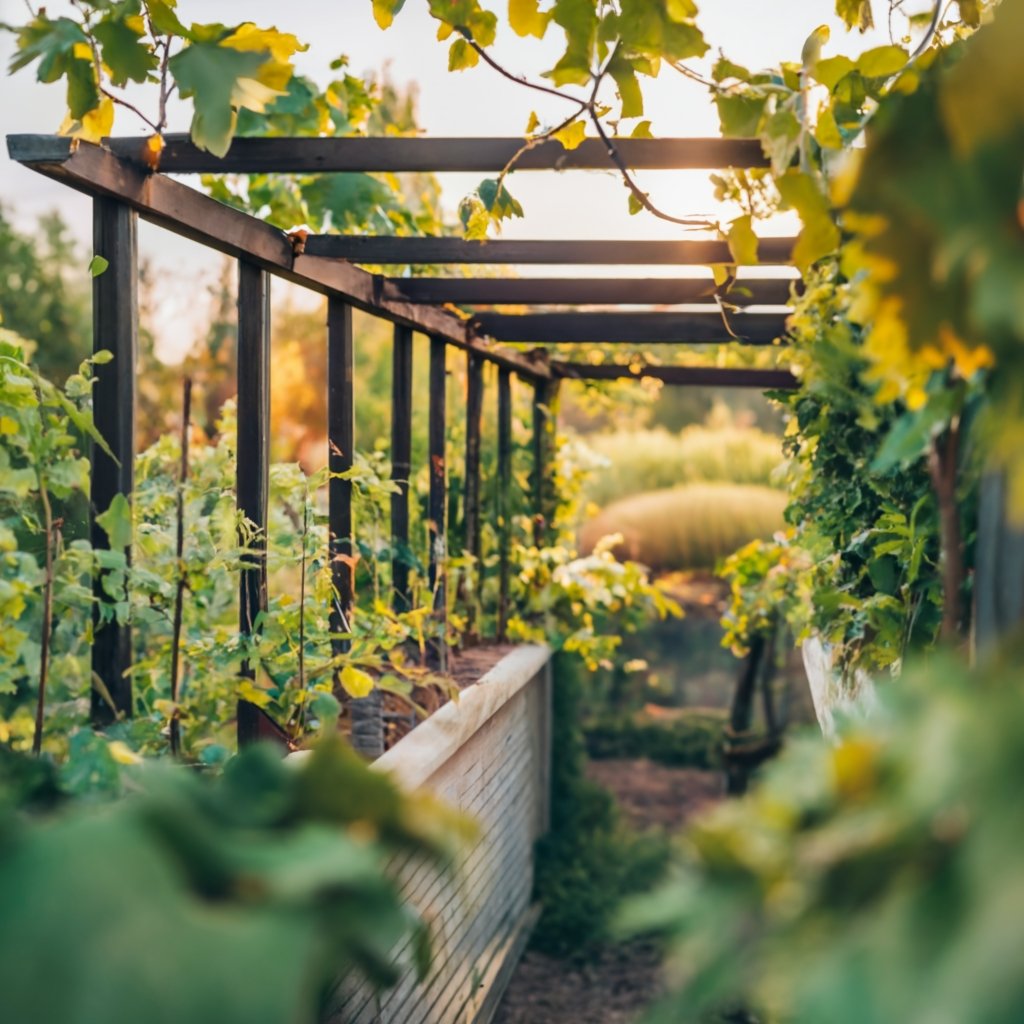
If you’re pondering how much space you should set aside for your grapevine, you’re in the right place. Let’s dive in and unravel the mystery of grapevine spacing!
1. The Basics of Spacing: Typically, grapevines are happiest when they have ample room to spread their branches. A good rule of thumb? Aim to plant them at least 6 feet above the ground. This gives them enough height to flourish and drape gracefully.
2. Branch Out: Consider the branch spread. Grapevines love to stretch out, bask in the sun, and catch a breeze or two. By giving them the space they need, you’re ensuring they grow healthily and yield a better fruit harvest.
3. Vigor Matters: The vigor of your grapevine plays a significant role in determining space. Some grapevines are like energetic toddlers, growing rapidly and needing more room, while others are more like laid-back teenagers, taking their sweet time.
4. Age and Space: Here’s a fun fact: younger vines generally require less space than their older counterparts. As they grow and mature, they’ll need more room to stretch out. It’s like giving a kid a bigger bed as they grow taller.
5. Think Ahead: While it might be tempting to plant your vines close together (because who can wait for grapes?), remember they’ll grow. And trust me, in a year or two, you’ll be grateful for the foresight.
So, got your tape measure ready? Giving your grapevines the space they deserve means a happier vine and, ultimately, more delicious grapes for you. Cheers to smart gardening!
Materials and Durability: What’s Best for Your Grape Trellis?
Hello, aspiring grape gardener! Are you scratching your head, wondering what materials are best for your grape trellis? No worries, I’ve got you covered. Let’s delve into the world of trellis materials!
1. The Powerhouse: Galvanized Steel: First up, we have galvanized steel. This material is like the superhero of trellis materials – sturdy, rust-resistant, and built to last. While it might be a tad more expensive upfront, think of it as an investment. Your grapes will thank you, and so will your wallet in the long run.
2. The Importance of a Brace: Adding a brace to your trellis system can make a world of difference. It’s the support your trellis needs, especially when those grapevines start bearing fruit. It’s like having a trusty sidekick for your trellis.
3. The Classic: Arbor: An arbor is not just a pretty structure for your garden; it can be an excellent support for grapevines too. Perfect for those who want functionality with a dash of aesthetics. It’s like combining business with pleasure.
4. Weighty Matters: Grapevines can get heavy, especially when laden with fruit. So, it’s crucial to choose materials that can support the weight. After all, the last thing you’d want is your trellis collapsing under the weight of your bountiful harvest.
5. Decisions, Decisions: When it comes to the type of support to use, consider your garden’s size, the grapevine variety, and of course, your budget. Each garden and gardener is unique, and what works for one might not work for another.
There you have it, a quick guide on trellis materials. Remember, the best material is one that suits your needs and stands the test of time.
Tips and Tricks for the First Growing Season
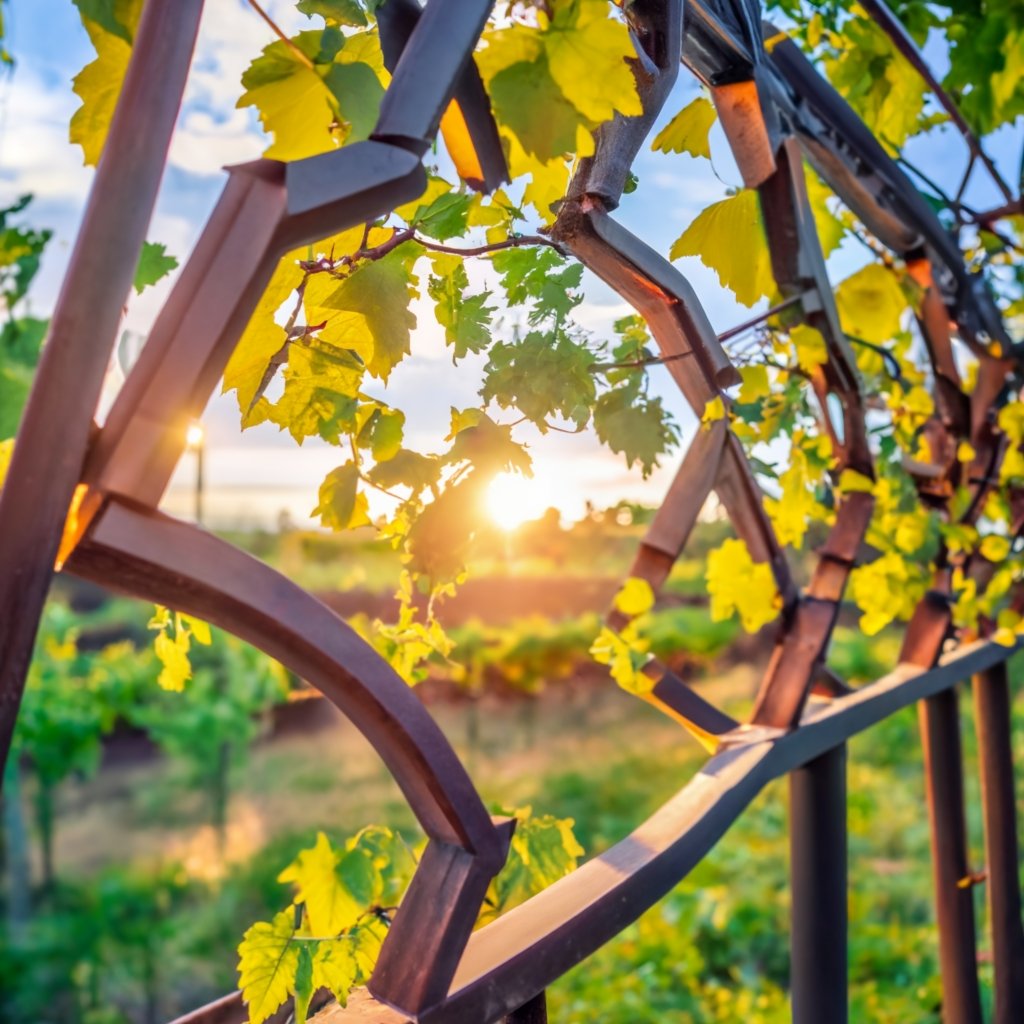
So, you’ve got your grapevines planted and you’re eagerly awaiting the first growing season. Exciting times! But with new adventures come new challenges. Here’s a handy guide to help your young vines thrive.
1. Watch that New Growth: During the first growing season, it’s all about nurturing that new growth. Ensure the soil is consistently moist (but not soggy). Think of it like giving your plants a steady diet of water without overfeeding them.
2. The Mighty Bud: Keep an eye on the bud. This little guy is the precursor to all the grape goodness you’re waiting for. Protect it from pests and give it all the love it needs.
3. Plan for the Next Season: Yes, you’re in the first season, but it’s never too early to think about the next season. Take notes, observe how your vines grow, and be ready to adapt. Preparation is key, my friend!
4. Support those Young Vines: Young vines can be a bit wobbly. Give them a little support with stakes or ties. It’s like holding a toddler’s hand as they learn to walk.
5. Seek Advice: There’s no harm in seeking advice. Chat with fellow gardeners, join online forums, or dive into gardening books. Knowledge is power!
Remember, every garden and grapevine is unique. What works wonders for one might not work for another. Stay patient, stay curious, and enjoy the journey.
References
- Trellising – Establishing a New Vineyard | Western Agricultural Research Center
- This guide provides information on establishing a new vineyard, focusing on the importance of trellising systems in grape cultivation.
- Choosing a Trellis System | eXtension Grapes
- This page offers insights on how to choose an appropriate trellis system, considering factors like the growth habit of grape cultivars and the climate.
- Backyard Vineyard Trellis and Training | WineMakerMag
- This article discusses various trellis and training systems for backyard vineyards, aiming to help hobbyists choose the right system for their needs.
- Growing White Riesling Wine Grapes | eXtension Grapes
- Focused on the cultivation of White Riesling wine grapes, this page provides guidelines on managing vine growth, including recommendations on trellising systems.
- How to Choose an Appropriate Trellis System for Vineyard | Agrow Group
- This resource explores various vineyard trellis designs, providing tips on how to select a trellis system based on the specific needs of the vineyard.
